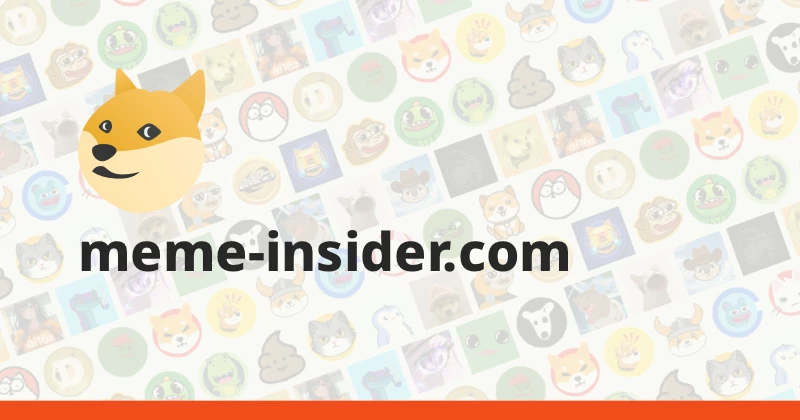Have you ever wondered how blockchain technology can transform the gaming industry? The recent discussion on X (formerly Twitter) by Polkadot and Mythical Games sheds light on this very topic. Let's dive into how they're tackling the challenge of creating sustainable game economies in the Web3 space.
The Myth of Unsustainable Game Economies
The notion that "game economies aren’t sustainable" is being debunked by industry leaders like John Linden, CEO of Mythical Games. In a detailed thread, he emphasizes the importance of focusing on utility and in-game assets rather than just tokens. This approach is crucial for unlocking real value in on-chain games.
Why Focus on Assets and Utility?
Traditional gaming often relies on a single game token, which can lead to volatility and unsustainability. Linden points out that games like "Call of Duty" or "World of Warcraft" have thrived for decades without a token, relying instead on the intrinsic value of in-game assets. These assets, whether rare items, skins, or other digital goods, create a dynamic economy where players are willing to invest time and money.
For example, in "World of Warcraft," the value of certain items or mounts can skyrocket due to their rarity and demand. This mirrors real-world economics, where scarcity and utility drive value. By applying this principle to Web3 gaming, developers can create economies that are not only engaging but also sustainable.
Polkadot's Role in Web3 Gaming
Polkadot, a leading blockchain platform, is at the forefront of this revolution. Its infrastructure allows for seamless integration of blockchain technology into gaming, enabling developers to build scalable, interoperable, and secure game economies. The platform's ability to handle high-traffic scenarios ensures that games remain smooth and responsive, even with millions of players.
The Mythos Chain and $MYTH Token
Mythical Games leverages Polkadot's technology through the Mythos Chain, a dedicated blockchain for gaming. The Mythos Token ($MYTH) plays a pivotal role in this ecosystem. Unlike traditional tokens, $MYTH is designed to be deflationary, meaning its supply decreases over time. This is achieved through mechanisms like token burning, where a portion of the tokens is permanently removed from circulation.
Linden explains that this deflationary approach ensures the token's value remains stable and grows over time. For instance, if the game decides to issue new tokens, it must burn an even larger amount to maintain deflationary pressure. This strategy prevents inflation and creates a sustainable economic model.
Building Sustainable Economies
So, how exactly does this translate into sustainable game economies? The key lies in focusing on the utility of in-game assets rather than the token itself. Here's a breakdown:
1. In-Game Assets with Intrinsic Value
- Assets like rare items, skins, or digital collectibles have inherent value because they are scarce and desirable.
- Players can trade these assets on secondary markets, such as the Mythical Marketplace, which is powered by the $MYTH token.
- This creates a vibrant economy where players are incentivized to engage with the game over the long term.
2. Utility-Driven Design
- Utility refers to the practical use of an asset within the game. For example, a rare weapon might offer unique abilities that enhance gameplay.
- By designing assets with clear utility, developers ensure that they remain relevant and valuable, even as the game evolves.
3. Decentralized Governance
- The Mythos ecosystem incorporates decentralized governance, allowing players and stakeholders to participate in decision-making.
- This democratic approach ensures that the game economy aligns with the interests of its community, fostering sustainability.
Real-World Examples
To illustrate these concepts, consider the following examples:
- Blankos Block Party: A game on the Mythical Platform where players can own and trade digital characters (Blankos) as NFTs. These assets have utility within the game and can be sold on the Mythical Marketplace, creating a secondary economy.
- NFL Rivals: Another Mythical Game where players manage digital player cards. The value of these cards fluctuates based on performance and rarity, mirroring real-world sports card trading.
These games demonstrate how focusing on assets and utility can create engaging and sustainable economies, rather than relying solely on a token.
The Future of Web3 Gaming
The collaboration between Polkadot and Mythical Games is a game-changer for the Web3 gaming industry. By prioritizing sustainable economies, they are setting a new standard for game development. As more developers adopt this approach, we can expect to see a proliferation of innovative, player-driven games that offer real value.
Key Takeaways
- Sustainable game economies are achievable through a focus on utility and in-game assets.
- Polkadot's infrastructure provides the scalability and interoperability needed for Web3 gaming.
- The Mythos Chain and $MYTH token exemplify a deflationary, sustainable economic model.
Whether you're a gamer, developer, or blockchain enthusiast, the insights from this discussion are invaluable. Stay tuned to Meme Insider for more updates on the latest trends in Web3 gaming and beyond.
Note: This article is based on the discussion from Polkadot's X post and related threads, providing a comprehensive overview of the topics discussed.



